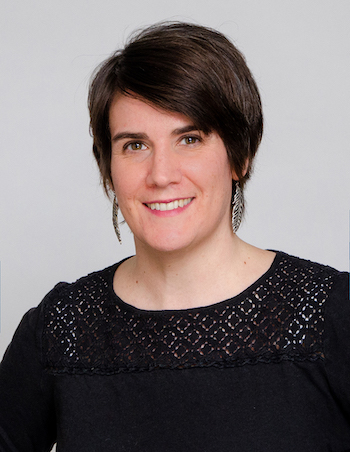In this episode hosts Casey Seymour and Aaron Fintel of Moving Iron LLC discuss the different used equipment trends they are seeing in various pockets of the U.S. and how different regions are seeing different inventory levels right now.
Looking at the Southeast, Casey says, “You’ve got a lot more guys out there that do cotton that requires more tractors … than what you see anywhere else. That being said, there’s some may be too many tractors right now and they don't know what they're going to do with that next generation trade.”
Watch the VIDEO REPLAY of this podcast.
Farm Equipment's "Used Equipment Remarketing Roadmaps" podcast series is brought to you by Ag Equipment Intelligence's 2023 Executive Briefing.
Join Ag Equipment Intelligence for an executive briefing of the year to come and hear from those with boots on the ground – Dealers, Manufacturers, Industry Experts and more – as they share their successes, pain points and thoughts on how 2023 looks from their vantage point.
This two-day virtual event will give you an inside look at the year ahead from all sides of the industry, equipping you to strategically plan your business heading into 2023. As a virtual event, all sessions will be accessible from your computer, tablet or phone, allowing you to attend from home, the office or on-the-go. Register Now.
Full Transcript
Kim Schmidt:
Hi, I'm Kim Schmidt, Executive Editor of Farm Equipment. Welcome to Farm Equipment's Used Equipment Remarketing Roadmaps podcast. In this episode, Casey Seymour and Aaron Fintel of Moving Iron LLC discuss the used equipment marketplace and how different pockets of the US are seeing some different trends right now. Let's jump in as Casey and Aaron start off the conversation discussing tractor populations in the South East.
Casey Seymour:
I got my good friend Aaron on here with us talking about all the stuff happening in the marketplace. And there's a fair amount of stuff happening, but we could talk about the same things we always talk about, which is what's happening in the auction market, what's going on with various significant lines of equipment and those kind of things, so on and so forth. But I think what we need to talk about more than anything, obviously, is-
Aaron Fintel:
A lot of lines of delineation in the washout cycle.
Casey Seymour:
We don't need to talk about any of that, but one of the things-
Aaron Fintel:
That was beautiful.
Casey Seymour:
That was nice.
Aaron Fintel:
Well timed.
Casey Seymour:
I think one of the things that we need to talk about primarily here more than anything is what we see happening in the overall marketplace. And I think that they are starting to see some pockets of areas of the United States where all things aren't all the same, and not good, bad, or otherwise, we're just seeing some other things pop up and move around. If you want to take a look at what's happening... We'll just use the South East for example, Aaron and I both have plenty of people that we talk to every day about stuff that's going on. If you look at what's happening in the Southeast, it seems like there is more tractor population, I would say, than you'd see other places in the world, right?
Aaron Fintel:
Oh yeah. There's a lot more fleet action.
Casey Seymour:
Right, yeah. You got a lot more guys out there that do cotton that require a hell of a lot more tractors to make that thing work than what you see anywhere else. That being said, they are starting to see... There's some concern with some of the people I've talked with a little bit that there may be too many tractors right now and they don't know what they're going to do with that next generation trade. But you move, you start going west and you get to the Ohio River Valley, the Middle Tennessee River Valley, you start looking at the Mississippi Delta in that area and you don't see that same issue, right?
Aaron Fintel:
No.
Casey Seymour:
It's like the Georgia, Alabamas, Floridas, North, South Carolinas.
Aaron Fintel:
The FCC.
Casey Seymour:
Yeah, the FCC. The eastern side of the FCC, right? If you start looking at it from that perspective then you start moving forward, then you get to where we're at out here in the High Plains and if we had the tractors on the lot that they had in the Southeast, we very likely would have people interested in buying those.
Aaron Fintel:
Well, it depends. A lot of times what you have in those fleet situations like that, specifically in peanuts, cotton, that kind of stuff, you have smaller Magnums, smaller 8Rs, very low spec.
Casey Seymour:
True, yeah.
Aaron Fintel:
You don't have the big ones.
Casey Seymour:
Right, typically.
Aaron Fintel:
When those dealers that have a lot of those fleet type situations, they don't have trouble getting rid of 370s, 400s.
Casey Seymour:
True.
Aaron Fintel:
The over 300 crowd are all leaves. And they even have some of those that aren't... They're not I state spec, if you will.
Casey Seymour:
They're minimum, sure.
Aaron Fintel:
But just to prove your point, out here, that base spec thing would still sell.
Casey Seymour:
Sure.
Aaron Fintel:
It's still going somewhere. It's not going to be a "Well, what are we going to do with these?"
Casey Seymour:
Yeah. Because that's what would be available.
Aaron Fintel:
Right, exactly. It's a tractor.
Casey Seymour:
And I think that's the key to that scenario that we have right now is that we're seeing in the Southeast, it's a lot of the same thing.
Aaron Fintel:
And it's what we were talking about, Podcast or two back, for lack of a better word, the turds are still the turds in the marketplace.
Casey Seymour:
Word.
Aaron Fintel:
Not that those are that, but they're not part of the insanity group. You know what I mean?
Casey Seymour:
Oh yeah.
Aaron Fintel:
They're not signature edition like "Oh, this tractor new, was $500 and it brought $750 because it's there today." I think that has a big play on that. Both of those issues play off each other and even in a super hot market, that's where you get a little bit of "we better take a look at this kind of deal."
Casey Seymour:
Yeah, no, I think you're right. I think if you look at... But then you continue to go even further west than us and you get into the mountain states, you start looking at the extreme west coast.
Aaron Fintel:
The Inter mountain West.
Casey Seymour:
You start looking. You get down into the high value crop areas of Arizona and Southern California and all that. They're even worse off than we are when it comes to inventory. Because then you really start looking at niche machines, high clearance machines. Then you start looking at various different kinds of combine situations. I mean there's a bunch of different stuff that comes into that. When you look at our area specifically, I don't think you bring a whole bunch of 250 to 285 horsepower tractors here. And then you have a bunch of people that say "Yeah, I'll take one. Yep, I'll take one." With the exception of that is guys that are looking maybe to update a feedlot operation type style tractor. That's where a lot of those tractors that leave and go to a farm operation, when they come back used with five or six or seven hundred thousand hours on them, whatever it is, they typically end up in a more feed lot centric area.
Aaron Fintel:
Yeah and quite honestly, through the years we have bought tons of those for the feed lots for the berries because we don't produce that spec of tractor ourselves. The owner or operator, which is typically where that smaller, the under 300 goes, he wants all the stuff on it because he's driving it. When you get into, even in the high plains, the Midwest, you get into the multi-units, the fleets. And even in that realm, if there are little ones, they're fancy. The dairy, the feed lot doesn't want that tractor. They do, they don't want to pay for it and they don't want to babysit all this stuff that's going to go wrong when it's covered in manure.
Just to piggyback on what you were saying there, we have participated in that, take that tractor there, move it here and it's perfect. And that's somewhere where those cotton, peanut kind of tractors, they end up in veggie country once in a while, too. The cool thing is, once you... In the north, Michigan, Wisconsin, Minnesota, all that, you got potatoes there. But once you get to the high plains in the west, you got more potatoes, more sugar beets, more-
Casey Seymour:
So much more diversification.
Aaron Fintel:
Yeah. And that's where, sugar beets, case in point, that's a high tractor number market because there's a lot of steps. Potatoes, insane. Lots of tractors.
Casey Seymour:
I think that's one thing where the equipment people, when they're looking at what's going on, the further west you go and you start getting west of the Mississippi River and you start getting past I-29, get past the Missouri River and you start moving west past that, the soil conditions change, the amount of water that you get changes, all these things start to change that dramatically, dramatically affect the growing of corn and soybeans.
Aaron Fintel:
Well... Case in point, you get too far west of 29 and there aren't any soybeans.
Casey Seymour:
Right, yeah. It's more vegetables.
Aaron Fintel:
You get some in North Dakota, but you get Western Nebraska, Western Dakotas... You run out of soybeans when you hit mountain time zone.
Casey Seymour:
Pretty much. Yeah, pretty much. But you start looking at the diversification in those areas.
Kim Schmidt:
We'll get back to the conversation in a minute, but first I wanted to invite you to join us virtually this December 8th and 9th for the Ag Equipment Intelligence Executive briefing. To learn more and to register, visit agequipmentintelligence.com/executivebriefing. Now back to Casey, Aaron and [inaudible 00:09:21].
Casey Seymour:
I'm not saying there's not multiple crops getting grown in Georgia. I'm not saying that at all. You grow corn and cotton and peanuts and whatever, sweet potato. There's all kinds of stuff, right? All kinds of stuff that you're growing.
Aaron Fintel:
Tons of stuff.
Casey Seymour:
What I was saying is the common number of crops that a farmer grows in the areas that we live in is, you got guys that'll do some pivots of alfalfa, they'll have cattle, they'll have corn, edible beans, sugar beets. The list just goes on and on and on. And there's all kinds of stuff. [inaudible 00:10:02], you name it. There's all kinds of things. And each one of those crops, I mean obviously they have the same, they have planter, you got tractor, you got a combine, you got whatever it is that you're using to harvest.
But it just seems like the need for multi-level horsepower tractors is more abundant here west than you see some other places. Because you have a place in the farm for a 600 power horse, a four wheel drive. You'll have a 300 horsepower rail crop. You might have a 250 horsepower tractor used in a row crop situation or a-
Aaron Fintel:
That's also a loader tractor.
Casey Seymour:
That's also a load tractor. You know what I mean?
So now you start looking at that. So that diversification of equipment that you start seeing out here, just because of the needs that you see out here. For guys to make a living farming is different than what it is in other places. There's so many different things that you have going.
Aaron Fintel:
Oh, absolutely.
Casey Seymour:
So I think that that need for the diversification of equipment horsepower, just whatever it is. Bigger isn't always better. So there's a lot of things where we might see. Your tillage piece, that's your primary tillage piece might be 35 foot wide, but you have some secondary tillage pieces that might be whatever, 50 feet wide-
Aaron Fintel:
60.
Casey Seymour:
Depending on what it is. So there's some situations there. And again, not that there's not diversification east of here because there is plenty of diversification, but that diversification tends to evolve around corn, soybeans, cattles and hogs. Cattles, that's peddles, right?
Aaron Fintel:
Well, sometimes you have cattles.
Casey Seymour:
It's the cattles.
Aaron Fintel:
It is. It's the cattles.
Casey Seymour:
I'm going to go out and feed my cattles here. So anyway. But that's the four things that that typically revolves around and here it's cattle. And then about-
Aaron Fintel:
Well, you could even drill that down into just corn and soybeans because the amount of cattle to the east is, yes, there's plenty there and lots of ice state guys feed, but they're far lower numbers that way than the high plains West.
And that being the case, there's hogs all over. But that, that's where your corn and soybeans takes over. That's a feed right off of that. So if your corn and soybeans aren't going anywhere, market wise, the piggys probably aren't eating when you get to that direct correlation.
Casey Seymour:
That's what I think. So you start looking at where the things are at. So now long story short is here, we're seeing a buildup of tractors in the Southeast, and we're starting to see that slowly tick across the United States and even in Canada, we're starting to see some of that too. So when you're looking at-
Aaron Fintel:
But here's an argument being the used, get rid of this guy. Is there really a problem or is there just a problem with the ridiculous pricing levels we're at right now?
Casey Seymour:
Well, I mean, that's the same argument. That's a timeless argument. An argument. The same guy was saying the same thing. I can't believe I'm paying $250,000 for a used tractor.
Aaron Fintel:
No. And I don't mean it that way. I mean like...
Casey Seymour:
You mean the narrowing of the customer base?
Aaron Fintel:
No, no, no, no. I'm talking about we got too many tractors. Well sharpen your pencil a little bit and you won't. That's what I'm getting at.
Casey Seymour:
Oh yeah. I see what you're saying. Well, yeah, to some extent, I think one of the bigger issues that we see with equipment piling up or whatever you want to call it, is simply that the front end of the washout cycle is just cram full. One and two year old machines. That's what's coming in right now. There's not that, and you got to go find the three to five year old stuff. You got to go find the whatever, the six to 10 year old stuff and you got to go find-
Aaron Fintel:
The three to five, that's the sweet spot.
Casey Seymour:
Right. And so... If you can get into that three to five... To get to three to five year old stuff, you've got to have a good amount of stuff out there for the overarching stuff that you see on the washout side. If you saw on one side, it's no different. We've seen the past. Difference here is we don't have the backflow no stuff coming in. So to answer your question, probably some of the issues that we're seeing with some of the stuff might be that. But I think a lot of it too has to do with the time of year. I think that has something to do with it. We've got guys that are looking at what's my year end look like? So everyone's pretty well done with harvest right now, and I'm pretty well, I got seven days to go or I've got-
Aaron Fintel:
Right, they know where they're at.
Casey Seymour:
They pretty well know what they've got. So now they're going to start having those conversations about, hey, this is where I'm looking at, da da da. Stuff put together, go head up the accountant. And then all of a sudden, you have the same conversation every year. Oh man, stuff's kind of slow moving, blah, blah, blah. And all of a sudden takes off and runs. We have what, 60 days here? Well, no, I guess we don't have that much.
Aaron Fintel:
No we don't.
Casey Seymour:
45 days pretty much. Because what's today? Today's the 22nd.
Aaron Fintel:
You got like 40 days.
Casey Seymour:
About 40 days to go.
Aaron Fintel:
Which means 30 days.
Casey Seymour:
Right.
Aaron Fintel:
Don't shoot yourself.
Casey Seymour:
But a lot of that stuff too is what's driving some of this stuff more than anything is what's available. And a lot of stuff's just not available right now.
So I think if you're looking at that stuff, then you start looking at combines, you start looking at all these other stuff, forge harvesters, you start looking at those kind of things. The volume of combines right now is about a third of what it was a year ago. The number of combines on the marketplace. Still a lot of combines. But that goes back to that same thing I just said earlier. There might be whatever, four or five thousands on the market, but probably 2,500 of those are actually available.
Aaron Fintel:
Right, exactly.
Casey Seymour:
And I think that's what we run into more than anything when we're talking about this, is that there might be a perception that there could be a lot of stuff in the place and their inventory and that could very well be there. But what's actually available for sale, someone to take home today is, it's not necessarily true.
I mean, you look at our website. It looks like we got a bunch stuff, but not all that stuff's available.
Aaron Fintel:
Don't drive by the lot.
Casey Seymour:
So that's just a whole nother thing that we're seeing. And I think that will continue through what's happening there. And that interest rates are going to play a big role in what we see happening, and that's going to play a bigger effect on a lot of things, especially [inaudible 00:17:05] start looking at doing lines of credit renewals and those kind of things for 23.
Aaron Fintel:
It used to be, when you're selling a combine, the first question was what kind of shapes is it in? Now it's what's the interest rate?
Casey Seymour:
And I think that's going to continue to be an issue into 23. So I don't know. It's so hard to pinpoint what's the actual state of the union when you don't have all the data, you see all the data, but you don't know the impact of that is because not all of its influx yet.
Aaron Fintel:
You can't truly tell what state the union is in.
Casey Seymour:
That's no pun intended there. So I think that's the big picture of this whole thing, is that there is going to be, there is a wave, oh, wave's probably not the right word. There's going to be an influx of used inventory, I think, that first quarter of 23. And we're going to see that grow, like you think you would normally see it grow through March, and then we'll start seeing some things happen based around what goes on into the overarching models of the qui marketplace.
Aaron Fintel:
Got you.
Casey Seymour:
All right. Oh, man. So one thing we used to do a lot, but we haven't done for a while, is the Aaron Fintel deal of the week. Anything out there that you're pimping right now?
Aaron Fintel:
Lots of combines. Combines and choppers. I got a R45 sprayer.
Casey Seymour:
An R45 sprayer?
Aaron Fintel:
R40 45 sprayer. Soon as I said that, I was like, wait, that's not enough numbers.
Casey Seymour:
That's [inaudible 00:18:46].
Aaron Fintel:
Yeah, that'd be like a four...
Casey Seymour:
Four and a half foot boom? 45 stands for-
Aaron Fintel:
Yeah, it's autonomous, but it's a nice sprayer. It's on Twitter, you can catch it out there. Lots of combines on Twitter, choppers on there, couple planners here and there. So the Twitter verse has been fairly active yet again. Had to blow on it like a Nintendo game back in the day to get it to work again. It's like, I don't know how to do this. What do I do with my hands?
Casey Seymour:
So where they find that stuff on the Twitter verse?
Aaron Fintel:
Well, you can reach me on Twitter at AA.Ron Fintel. Also on Facebook, you can reach me there. Call me, text me. (308) 760-1193.
Casey Seymour:
You can find him on the LinkedIn as well.
Aaron Fintel:
Yes, the LinkedIn, correct.
Casey Seymour:
I always say if you're going to be linked, you might as well be LinkedIn.
Aaron Fintel:
Whether you're in or out, you're linked.
Casey Seymour:
That's right. You can always find a cool way to do this. Looks like I have some technical difficulties here with the video, so we're just going to let it ride.
Aaron Fintel:
There you go.
Casey Seymour:
You could find me. I'm Casey Seymour. You can find me at Facebook, Twitter, and Instagram at Moving Iron LLC. You can go to LinkedIn at Moving Iron Podcast and you can find the video version of this, which is questionable right now at The Moving Iron Podcast YouTube channel, which is the Moving Iron Podcast, YouTube channels, what it's called. Super. I've been creative about a lot of things in my life. That was probably my best work.
Aaron Fintel:
Well, you knocked it out of the park with that one.
Casey Seymour:
So check that one out there. Go to Moving Iron LLC for everything Moving Iron related, and you can find all the information out there about anything you want to find. That is Moving Iron related@movingironllc.com. So with that, I am Casey Seymour with my boy Aaron Fintel. Happy Thanksgiving everybody. [inaudible 00:20:44]. Out.
Kim Schmidt:
Thanks to Casey, Aaron and Ben for sharing their conversation with us. You can keep up on the latest industry news by registering online. To receive our free newsletters, visit www.farm-equipment.com. For Casey as well as our entire staff here at Farm Equipment on Kim Schmidt. Thanks for listening.












